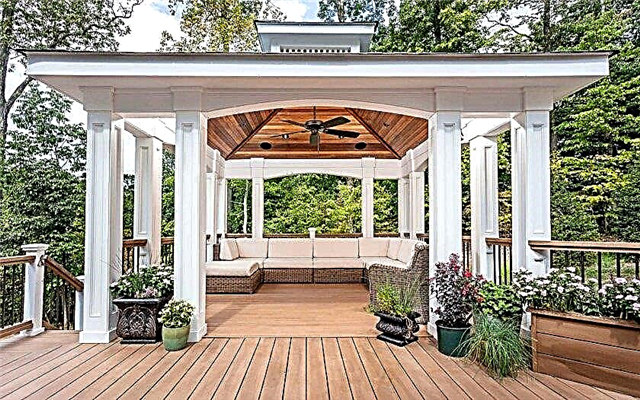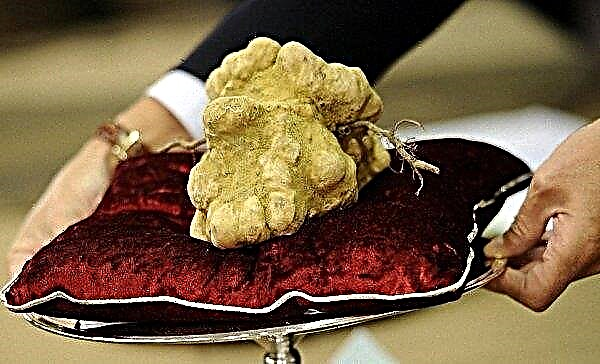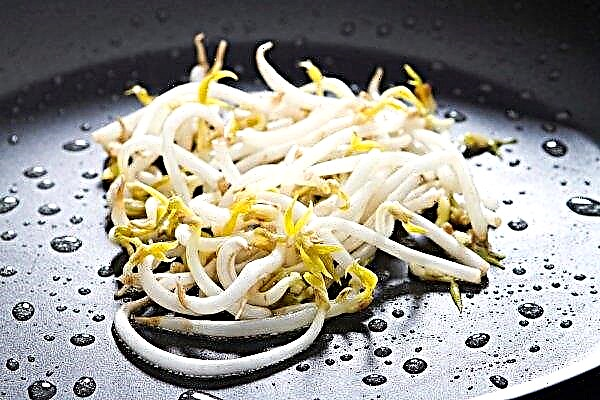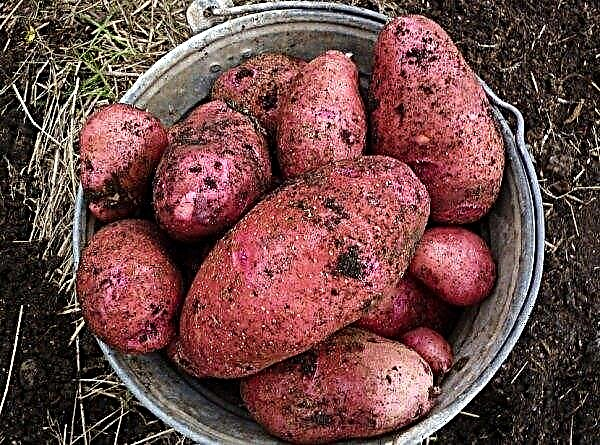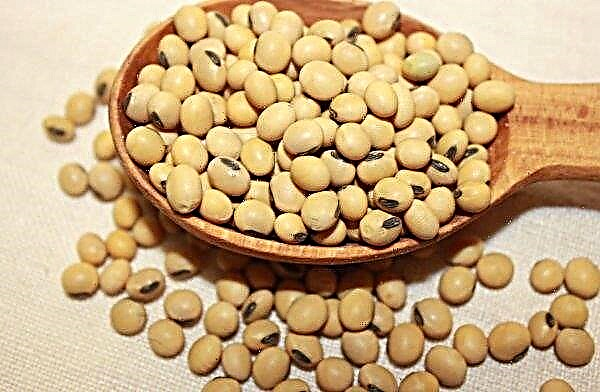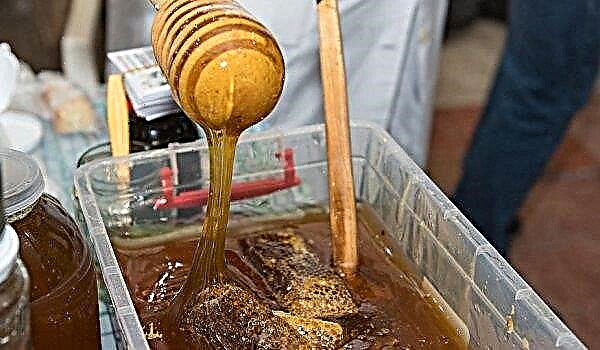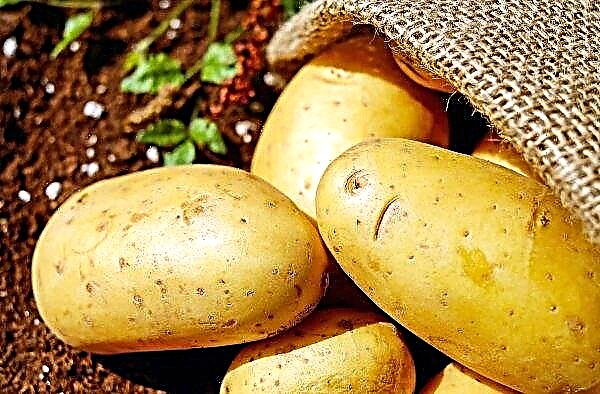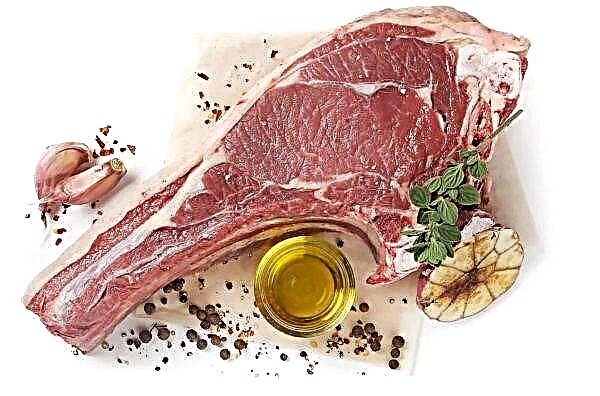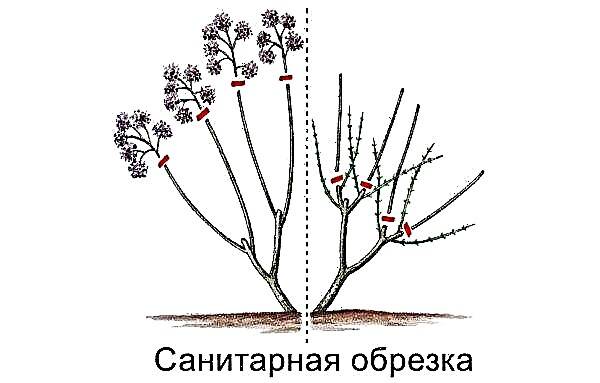Expanded clay has been used as a building material for a long time. But, in addition to warming walls and floors, they can decorate paths and flower beds on a personal plot. Below you will learn about the use of expanded clay in landscape design and how to put it correctly.
Advantages and disadvantages of using expanded clay
Expanded clay is a product of the processing of clay or shale. The starting material is fired in special furnaces at a very high temperature (+ 1300 ° C). The result is rounded granules, smooth on top and porous on the inside. It is the internal porosity and decorative appearance that make expanded clay demanded not only in construction, but also in landscape design.
- Material qualities valuable for horticulture:
- low moisture absorption (up to 20%);
- environmental friendliness;
- decorativeness;
- frost resistance;
- durability;
- a light weight;
- low cost.
Did you know? The clay from which expanded clay is made has the property of washing (but not foaming). It used to be used as a soap, which could be washed in water of any hardness. In the sacred Indian river Ganges and now it is allowed to wash only with clay soap.
Expanded clay varieties
There are several varieties of expanded clay:
- sand - small rounded granules smaller than 5 mm;
- gravel - oval granules from 5 mm;
- crushed stone - the same gravel, only cubic in shape.

Expanded clay gravel, in turn, is divided into categories (fractions):
- small - 5-10 mm;
- medium size (most popular) - 10–20 mm;
- large - 20–40 mm.
 In gardening, claydite sand is more often used, as well as medium-sized gravel.
In gardening, claydite sand is more often used, as well as medium-sized gravel.How and what can paint expanded clay
The most common colors are terracotta, brown, brown and gray-beige. There is also colored gravel of various shades on sale. If in the construction store there is no expanded clay of the desired color, you can paint it yourself at home. Most often, acrylic paints are used for this purpose. It is important to pay attention to the quality and characteristics of the paint material.
Important! It is better not to dry expanded clay after painting on an iron surface. If there are inclusions of rust on it, they can ruin the appearance of gravel.
Paint requirements:
- environmentally friendly, does not contain toxins;
- color is bright;
- light fastness - 5–7 points;
- resistance to heavy rainfall, bright sunlight and sudden changes in temperature;
- should not impair the moisture and air permeability of expanded clay granules.

The painting technology is simple.
- Pour gravel (1/3 of the volume) into the concrete mixer and pour paint diluted with water (in accordance with the instructions).
- Turn on the unit for 5 minutes. If the granules will be colored non-uniformly, then start the process for another 5 minutes.
- Sprinkle painted pebbles to dry with a thin layer on a wooden surface or on polyethylene.
 When the granules are completely dry, they can be safely used for their intended purpose.
When the granules are completely dry, they can be safely used for their intended purpose.
Ways to use expanded clay in landscape design
In landscape design expanded clay can perform two functions:
- drainage: for paths and plants;
- decorative: registration of flower beds, paths, alpine hills.
Decorating the front garden with colorful granules, you can create whole pictures. Expanded clay combines well with marble and granite in different colors.
Garden paths
Such an element of landscape design from expanded clay gravel of medium fraction looks very beautiful. But its practicality is low. If you constantly walk along such a path, then in a couple of years gravel will turn into sand.
Options for using expanded clay:
- a layer of gravel between the concrete path and the curb will ensure dryness even in rainy weather;
- filling expanded clay sand or gravel with a small fraction of the space between the tiles or paving stones (beautiful and dry);
- fill the track with expanded clay concrete - a mixture of expanded clay and cement mortar.
Important! If expanded clay concrete is poured in the hot summer, then it must be covered with something to prevent premature evaporation of moisture and cracking of the concrete surface.
Production of expanded clay concrete:
- Add expanded clay (8 parts) to the concrete mixer and pour water (1.5 parts). Wait for the liquid to absorb.
- Pour cement M400 (1 part) and sand (2 parts).
- Knead for about 10 minutes.

How to put a track:
- Mark the future path with a string and pegs.
- Remove topsoil. The depth should be sufficient not only for the concrete pavement, but also for the drainage layer.
- Tamp the soil. Cover the recess with geotextile material.
- Fasten side formwork.
- Pour drainage (sand, gravel or gravel) with an even layer.
- Lay the reinforcing frame (netting, pipe or wire mesh).
- Prepare a mixture of expanded clay concrete and fill it with a track.
 Such tracks are very durable and last for many years.
Such tracks are very durable and last for many years.Tile tracks
In areas with swampy soil or near groundwater, a thick layer of drainage should be placed under the road tile. Expanded clay or fine gravel is excellent for this purpose. This material absorbs moisture well, thanks to which groundwater will not be able to rise to the surface, and rainwater is quickly absorbed, and the tile remains dry.
Laying Technology:
- Tamp the prepared depression for the path and lay it with geotextiles.
- Pour a layer of expanded clay sand. The more moisture in the soil, the thicker the drainage layer should be.
- Pour a leveling layer from a mixture of sand and cement or lay a reinforcing mesh.
- Lay tiles or paving stones.

For flowers
In floriculture and horticulture expanded clay gravel is actively used for drainage of soil. It does not mold and does not rot; it passes water and air well. The porous structure of gravel located in the ground allows it to quickly absorb moisture, and then, if necessary, release it. This allows you to achieve the optimal air-water balance in the soil for most plants - 35% air and 15% water.
Did you know? There are edible types of clay. Some Australian Aborigines and African tribes gladly absorb blue, white, and green clay. The indigenous population of Siberia was popular dish of sour cream based on deer milk and kaolinite (one of the varieties of clay).
Two ways to drain soil with expanded clay:
- A layer of gravel is poured at the bottom of the flower pot or pit, the thickness of which depends on the size of the container (hole) and the volume of the root system. Then the roots are covered with fertile soil.

- Mix the soil with expanded clay granules and fill it with a hole or pot. This improves the aeration of the root system, and provides protection against rodents in the open ground.

For masonry
Today, rarely build houses with wells in the walls, which are filled with insulation and soundproofing material. Wells used to be filled with slag, which still retains heat in old buildings. Expanded analogue of such a filler is expanded clay gravel, which perfectly retains heat.
The essence of well masonry is that two parallel walls with a gap between them of 14–34 cm are being built at the same time. Every half a meter of emptiness is covered with fine expanded clay gravel, which must be carefully tamped. For ligament and fixing, the filler is watered with cement “milk” or reinforcing brackets are laid. Thanks to such measures, expanded clay will not settle over time, and the thermal insulation layer will “work” for decades.
Expanded clay gravel has many advantages. Therefore, it is very popular not only in construction, but also in gardening. This material will benefit the plants and decorate your garden.



